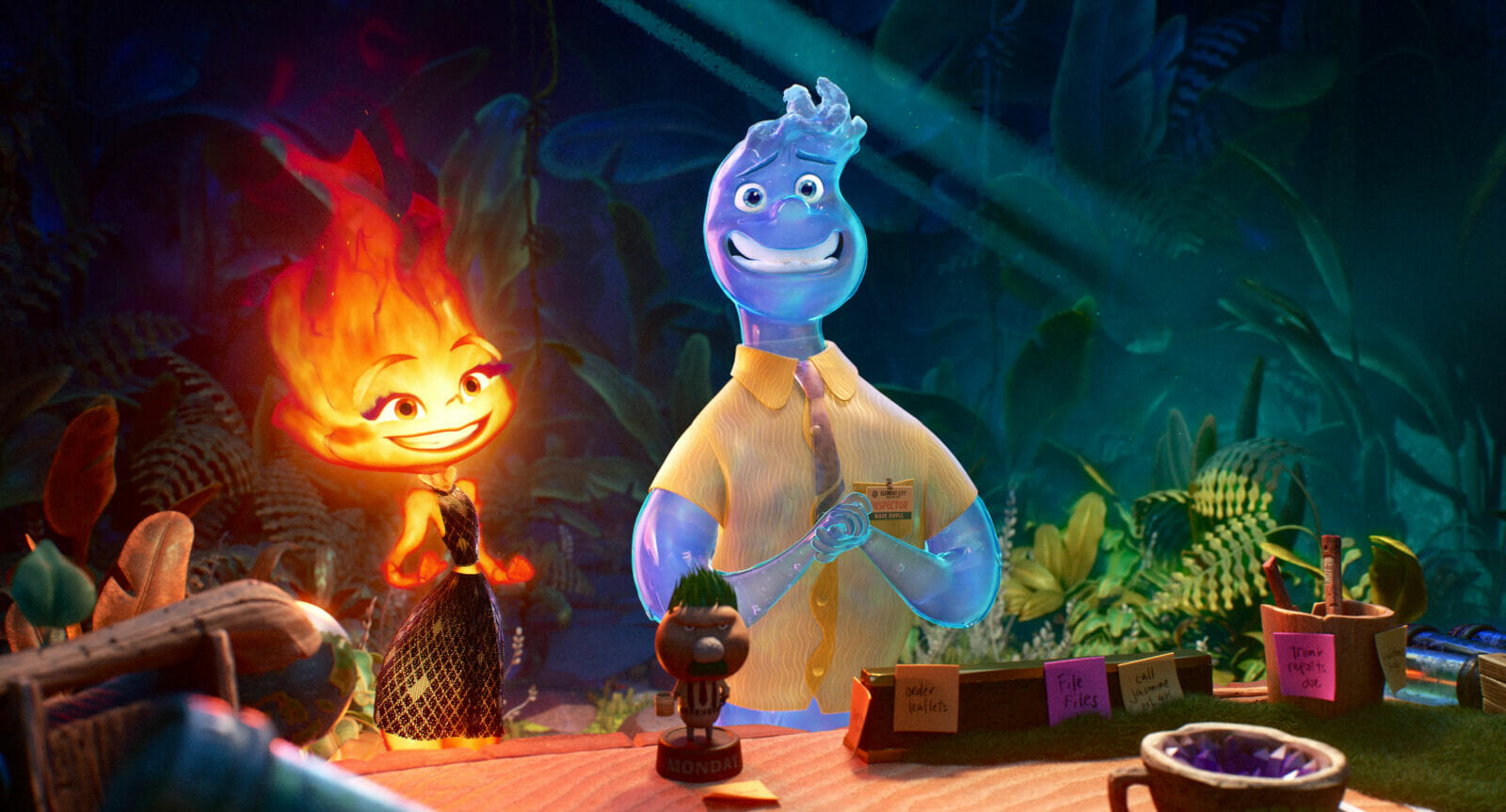A forbidden love between fire and water may not be the most creative concept, but at no point does Elemental make a “steamy romance” pun, so these writers are working with restraint. Not much, though—unless you count Luca’s queerbaiting, Elemental is Pixar’s first rom-com, a genre unconducive to self-control. Shield some eyes, parents, because this love affair is PG for pretend gratification.
READ ALSO: Read all of Ryan Bordow’s movie reviews here
DEEPER DIVE: Here’s how Arizona film incentives could attract filmmakers
The trailers have played up the romance angle, but lurking behind that hook is a quintessential immigrant story. Elemental was conceived and directed by Peter Sohn (The Good Dinosaur), whose parents were Korean immigrants in the ‘70s Bronx. The film echoes his experience with a fairly sweeping allegory: in Element City, which was initially designed for water people and later welcomed trees and clouds, fire people—the newest arrivals—are second-class citizens. They live in a neighborhood dubbed Firetown (which rings better than “Little Fireland,” apparently) and are generally mistrustful of water people, who are prone to microaggressions and crying (and sometimes crying about their microaggressions, aligning them instantly with Whiteness).
In an ostensible bid to avoid essentialism, fire people represent a blend of immigrant identities rather than one race or ethnicity. Their language, “Firish,” at turns sounds South Asian, East Asian, and Middle Eastern; their architecture and traditions are similarly inconstant; and the central family—protagonist Ember, her father Bernie, and her mother Cinder—consists of actors with Chinese, Filipino, and Iranian roots, respectively. This could come off as identity conflation, but the film paints such broad “immigrant story” strokes that you can tell it’s just treading lightly.
On the flipside, such a general view of immigrants strands the story at surface level. This isn’t a narrative of cultural (and thus emotional) specificity; it’s a purposefully vague love story adorned in immigrant décor. Elemental wallows in that vagueness from design to dialogue. Ember’s parents want her to take over the family store, evoking the themes of countless immigrant stories—responsibility to family, thankless work in a thankless new home—but in the absence of cultural detail or more adult stressors (there’s nary an indication the family must work to survive), the conflict funnels into the expected “that’s your dream, dad!” and then pleasantly evaporates. Ember’s water beau Wade, who must serve as both a symbol of local privilege and a bubbly Pixar boyfriend, ends up a too-affable stock character, all quirks and no flaws. It’s all very thin.
The worldbuilding, too: Element City, a bustling confluence of indomitable natural forces, just looks like a human city with rounder edges and more colors, failing to take advantage of the concept’s full potential. They poke fun at the city’s ordinariness—Ember and Wade phase through a chain-link fence with a winky “why do they even have these?”—but meta jokes don’t forgive a lack of imagination. From a design perspective, the only real standouts (beyond the sheer quality of the animation; what’s done with light is wondrous) are the characters, who burst with personality. Take Bernie, Ember’s dad, for example: his body is mostly head and his head is mostly mouth, so when he laughs, he ignites, his gaping guffaw consuming his entire being. He stirs a potent mental image of a hands-on-belly laugh drowning out a family dinner. The way Wade’s whole self undulates when he cries conveys a comfort with his body as well as his emotions. The elements are more expressive than their world.
The movie peaks when it meshes that expressiveness with its score, a poignant, instrumentally diverse set of songs from Thomas Newman, who scored classics like The Player and The Shawshank Redemption. His Indian-inspired riffs and hauntingly plaintive melodies exude fear, loneliness, hope, nostalgia, all the emotions the script fails to elicit. They hit even harder in concert with the character design: at Ember’s lowest, her flaming head withers to a flicker, depressing her features as a mournful refrain plays out her grief in resound. These little syntheses of sound and image are more powerful than the story unfolding inside them. Luckily for Elemental, its score is near-omnipresent, meaning these moments aren’t few or far between.
They’re not enough to save the movie, but they’re enough to hold it together: each peak girds the drama and deepens the relationships long enough to wait for the next one, raising Elemental just above Pixar’s weakest efforts. It’s a basic movie, but when it nails the basics, it achieves something lasting.
★★★ (3/5)




